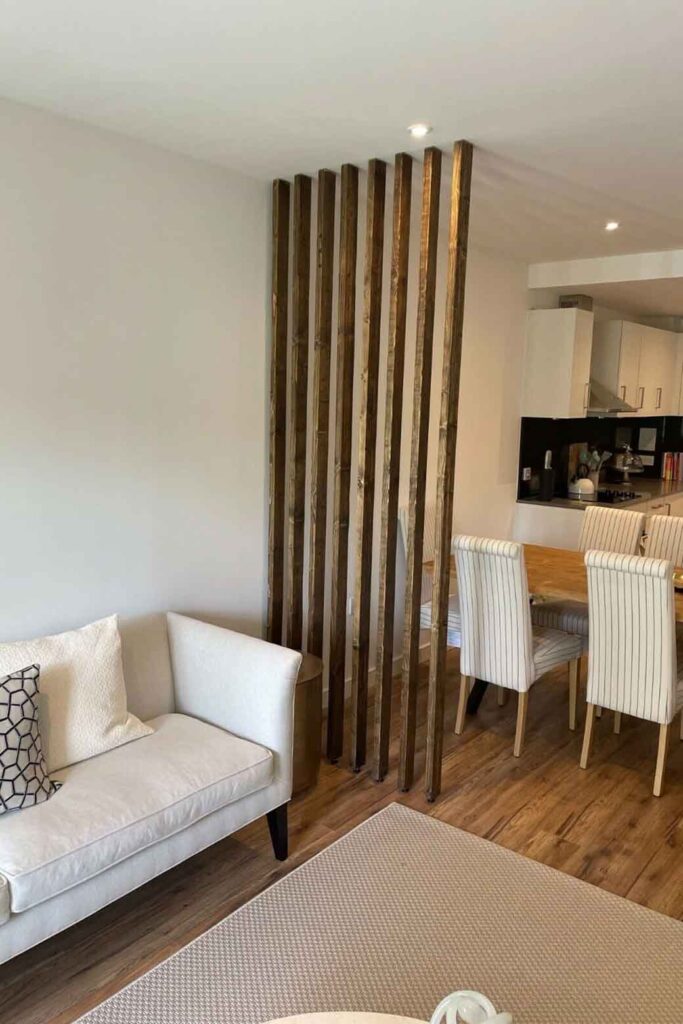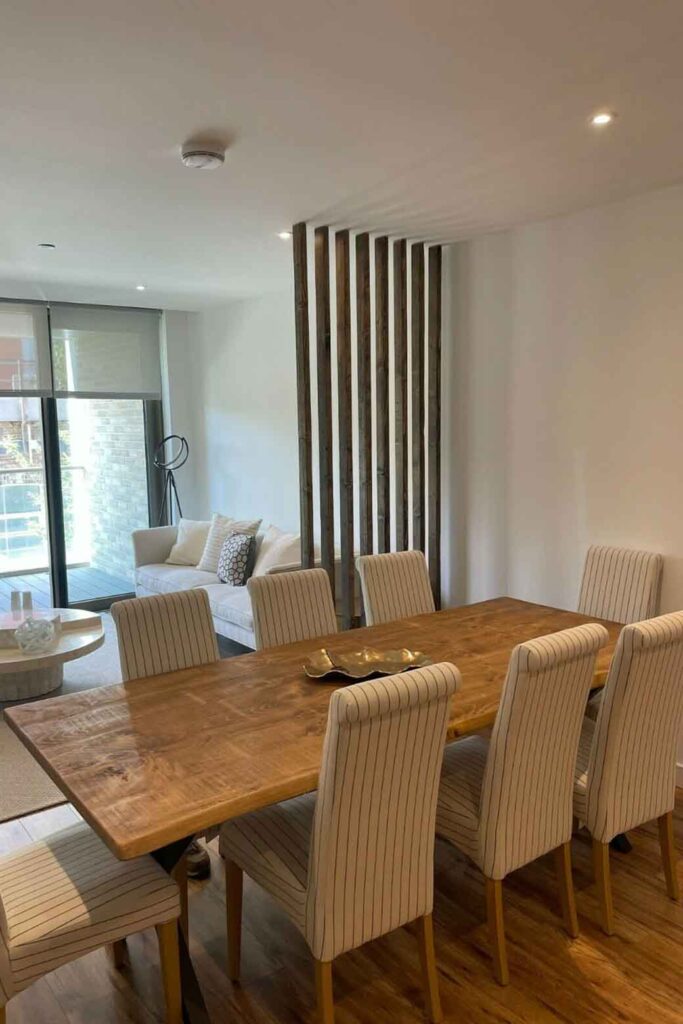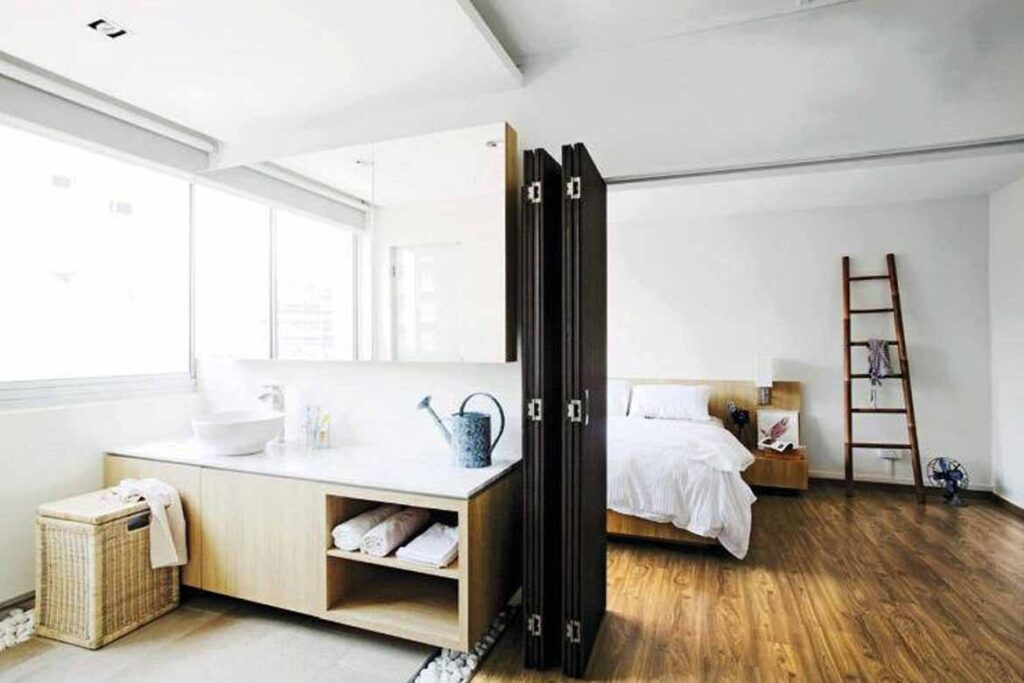
Room dividers are beginning to resurface as a creative and fun way to bring structure into the home.
25 March 2022

A room divider is a way of sectioning off one room into multiple separate areas. Traditional room dividers are screens, but in small spaces people have been known to use other furniture pieces to achieve the same effect. Some use couches to create a clear line between living room dining table, and some DIY options will suggest using curtains as room dividers.

Room dividers are generally used by those who do not like the open concept style of living that has become more and more popular recently. There is a slight stigma around modern room dividers as a working-class solution to tight space constraints, which is odd considering that they were historically used only by royalty.
The earliest discovered folding screens have been dated to 7th century China, later gaining popularity in Japan where their design was made lighter and easily movable. Eventually room dividers spread to Europe, where they were mainly made of wood, leather, silk or mirrors. Today, room dividing screens are popular all across the globe, and the variety of designs available can make them a beautiful feature piece for your home.

Now, not all room dividers are traditional folding screens. Some room dividers look nothing like their traditional ancestors; though the concept is the same, they seem to have no stylistic connection to their original design roots. For those who love a contemporary interior, these types of room dividers are probably perfect for you.

Room dividers are the perfect organizational strategy to help create multiple environments in your home. You can use them to separate your home office from your recreational areas, to create a quiet reading nook, or even just to add a little structure between living dining rooms. They come in a variety of beautiful designs – particularly room dividing screens – and you can find room dividers in just about every material available such as bamboo, iron, wood or even fabric like silk.

When picking a room divider Singapore, you will want to consider which style will best suit your existing décor. Perhaps a modern partition for living room is the right choice for you; something sleek and contemporary that does the job without drawing attention away from the other design elements of your home.
For those who want something more personalized and customizable, room dividing screens are probably the way to go. There is a huge variety of beautiful designs and cultural influences such as Japanese, French, and Chinese screens all available for a reasonable price.

Another thing to consider is the specific purpose you want your divider to fulfill; do you need something sturdy? If so, perhaps the screens will not be a good choice for you as they generally aren’t anchored to the floor.
Or, conversely, do you want something temporary, so you can store it away when it isn’t needed? This is the perfect scenario for folding screens – they are ideally suited as a temporary feature put up for parties and guests.
Room Partition Singapore: 5 room divider ideas to improve aesthetic and function
5. Wooden partition

A partial room divider partition like the one pictured above is a great idea for those who want to conceptually separate the different rooms in their home without making their apartment feel cramped. The use of reclaimed scaffolding boards with gaps in between keeps the space open and bright while still providing structure to the rooms.

This is ideal for a household with adults or teenagers as young children may attempt to play with the planks and potentially hurt themselves or get stuck. The dimensions are: H 242cm x W 6.5cm/slat x D 3.5cm/slat and they have adjustable feet at the bottom meaning that you do not need to drill into the floor. You can purchase this partition wall here for $183.00 SGD.
4. Contemporary

Taking a step away from the traditional screen dividers, something like these steel-edged internal paneled doors are another great way to section off part of a room without losing any of the ambient light. They attach at the walls, so you will want to make sure that when you start searching you know the exact dimensions that will work for your home.

Alternatively, you could get a half-panel glass divider like the one pictured above, which is very similar to the earlier timber partition except this one has a sleeker, contemporary look (as opposed to the rustic wooden style). You can buy the single panel divider pictured above here for $1,239.
3. Ikea Screen Room Divider

A paragon of the furniture industry, Ikea has long stocked quality room dividers at affordable prices. The Risor screen pictured above is the perfect addition to any room, whether it’s for a little extra privacy, to block out some of the sun in the morning, or even just to add a touch of sophistication to your décor.

You can purchase it here for $295. One of the best things about this screen is that it is also foldable, meaning you can have it up as a temporary barrier and take it down as you please.
2. Ikea Storage Room Divider

A bookcase or a shelf unit is a clever way to section off a room while also giving you a huge advantage in terms of storage. This Kallax shelf unit has four inserts and comes in multiple colours. You can also customize your own KALLAX unit here with the Ikea planning tool to ensure you get the perfect fit for your home.

A nontraditional way of dividing up your floor space, this shelving unit has a cozy contemporary feeling perfect for small spaces with lots of accessories. You can buy it here for $322.80.
1. Bi-fold Door Panels

The Bi-fold panels are an excellent choice for those who want sturdy, flexible wall dividers.

They can be easily folded back to the corner of the room when you want to take full advantage of the space, and are simple to pull back into place when it’s time for privacy.

They are particularly popular for hdb studio apartments as a way of privatizing the bedroom without having to install a permanent wall and limit the overall space.
Like what you just read? Similar articles below

Residence R+A by Open Studio Architecture is a dual-form renovation that juxtaposes the solidity of a restored Victorian dwelling with the openness of a contemporary garden pavilion.

Shona McElroy had a brief of conflicting requirements when designing this family home – but underpinning it all was a space to truly relax in.